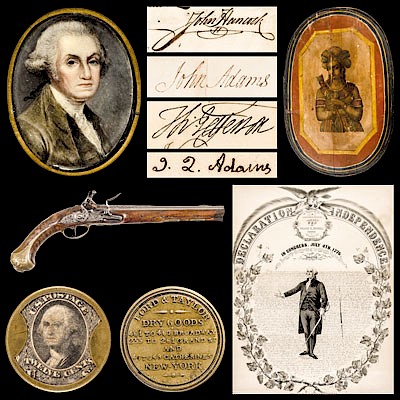c. 1860, General Winfield Scott Hancock Portrait - Steel Printing Plate
Lot 232
Estimate:
$900 - $1,200
Absentee vs Live bid
Two ways to bid:
- Leave a max absentee bid and the platform will bid on your behalf up to your maximum bid during the live auction.
- Bid live during the auction and your bids will be submitted real-time to the auctioneer.
Bid Increments
| Price | Bid Increment |
|---|---|
| $0 | $10 |
| $200 | $20 |
| $300 | $25 |
| $500 | $50 |
| $1,000 | $100 |
| $2,000 | $200 |
| $3,000 | $250 |
| $5,000 | $500 |
| $10,000 | $1,000 |
| $20,000 | $2,000 |
| $30,000 | $2,500 |
| $50,000 | $5,000 |
| $100,000 | $10,000 |
| $200,000 | $20,000 |
| $300,000 | $25,000 |
| $500,000 | $50,000 |
About Auction
By Early American History Auctions
Jun 1, 2019
Set Reminder
2019-06-01 12:00:00
2019-06-01 12:00:00
America/New_York
Bidsquare
Bidsquare : Historic Autographs, Colonial Currency, Political Americana & Revolutionary War Era
https://www.bidsquare.com/auctions/early-american-history-auctions/historic-autographs-colonial-currency-political-americana-revolutionary-war-era-4152
Historic Autographs, Coins, Currency, Political, Americana, Historic Weaponry and Guns, John Adams, Thomas Jefferson, Early American History Auctions auctions@earlyamerican.com
Historic Autographs, Coins, Currency, Political, Americana, Historic Weaponry and Guns, John Adams, Thomas Jefferson, Early American History Auctions auctions@earlyamerican.com
- Lot Description
Civil War Prints
Winfield Scott Hancock Original Civil War Era Steel Printing Plate Engraved by Dexter Photo Co. Hartford, CT.
c. 1860s Civil War era, mid-19th Century Engraved Steel Printing Plate, Portrait Image of Civil War Union General Winfield Scott Hancock was Engraved by J. C. Dexter Photo Co., of Hartford, CT, Fine.
This original, 9.5" tall x 6" wide extremely rare (if not Unique), Engraved Plate remains in good condition with overall moderate wear from use, with some marginal rust and trivial surface roughness that is mostly well away from the central engraved image of General Hancock. There is no date or place inscription. It was apparently used to produce a photographic image of General Hancock, most probably for a Civil War related book. Here, Hancock's engraved portrait appears just above his engraved signature. General Hancock's brilliance on the battlefield earned him the nickname "Hancock the Superb." All in all, this rare plate remains very presentable. It is accompanied by its original housing envelope.
General Hancock served with distinction in the Mexican War and was chief quartermaster on the Pacific coast when the Civil War broke out. Made a brigadier general of volunteers in 1861, and fought in the Peninsular campaign (1862). In the Antietam campaign he succeeded to the command of a division, and his command was heavily engaged in the battles of Fredericksburg (1862) and Chancellorsville (1863).
Hancock, commanding the 2nd Corps, played a conspicuous role in the Gettysburg campaign. Gen. George G. Meade chose to fight at Gettysburg on Hancock's recommendation, and in the last two days of the battle Hancock was foremost in repulsing the Confederate attacks, particularly General Pickett's charge on July 3rd, 1863. He was severely wounded in the battle.
At the close of the war, Hancock was assigned to supervise the execution of the Lincoln assassination conspirators. Lincoln had been assassinated on April 14th, 1865, and by May 9th of that year, a military commission had been convened to try the accused.
The actual assassin, John Wilkes Booth, was already dead, but the trial of his co-conspirators proceeded quickly, resulting in convictions. President Andrew Johnson ordered the executions to be carried out on July 7th. Hancock was directed to supervise the executions of those condemned to death. Although he was reluctant to execute some of the less-culpable conspirators, especially Mary Surratt, Hancock carried out his orders, later writing that "every soldier was bound to act as I did under similar circumstances."
- Shipping Info
-
Early American provides in-house worldwide shipping. Please contact us directly if you have questions about your specific shipping requirements.
-
- Buyer's Premium



 EUR
EUR CAD
CAD AUD
AUD GBP
GBP MXN
MXN HKD
HKD CNY
CNY MYR
MYR SEK
SEK SGD
SGD CHF
CHF THB
THB












